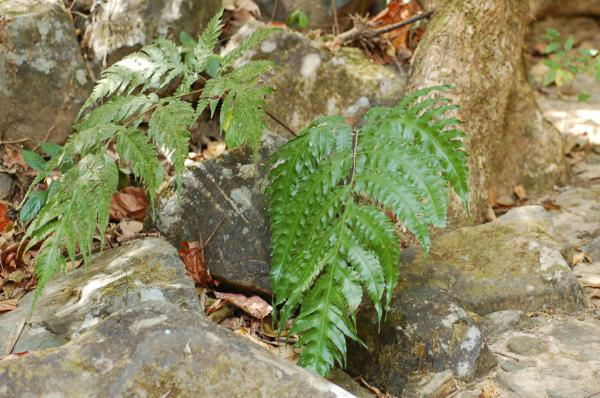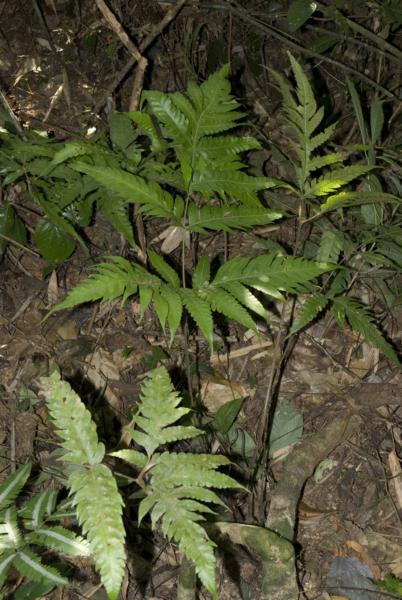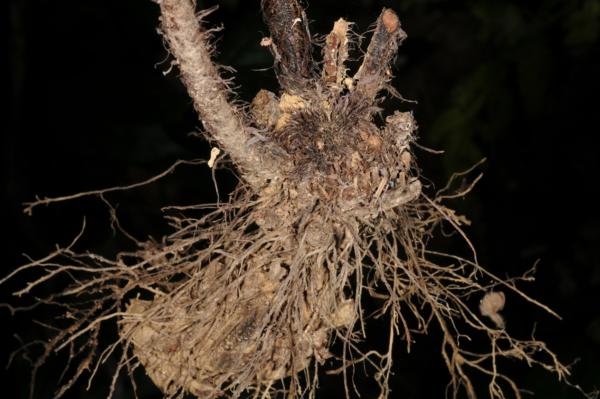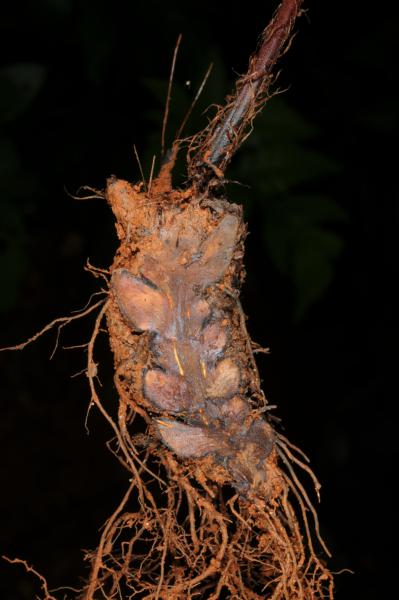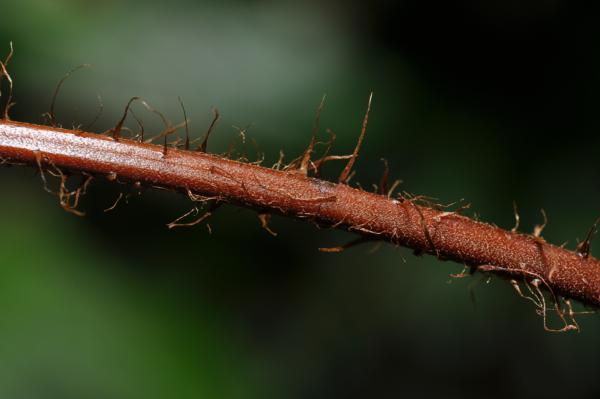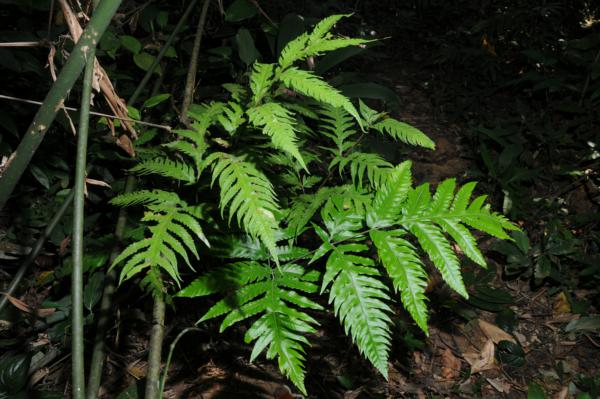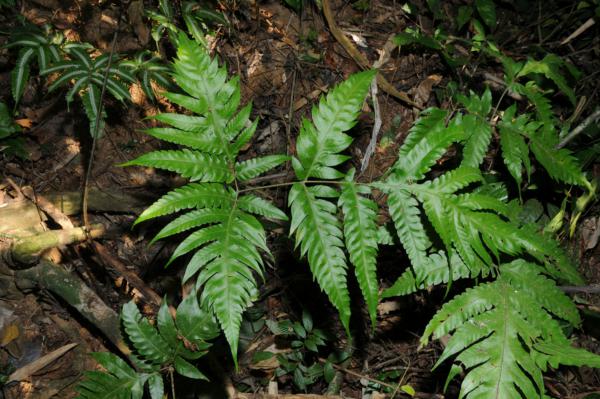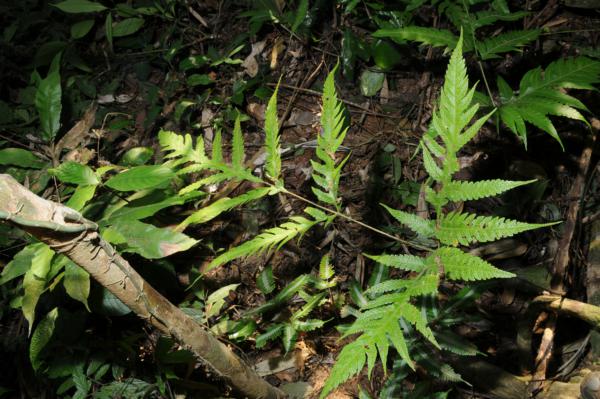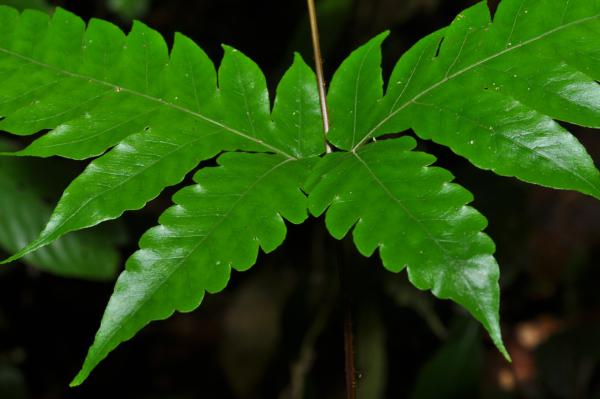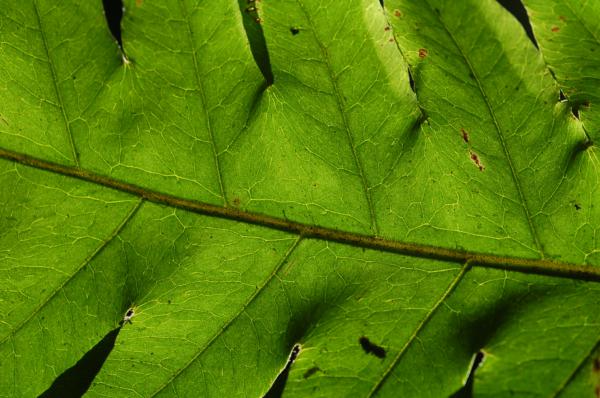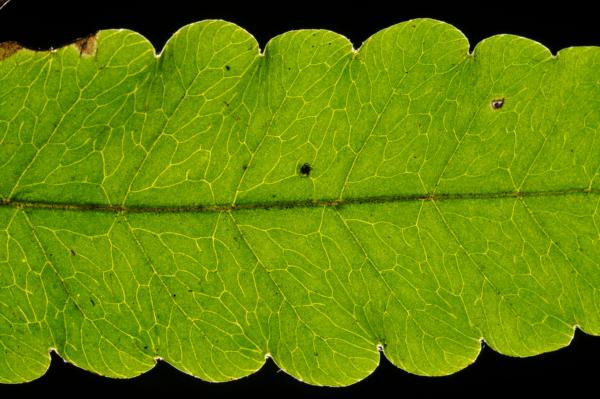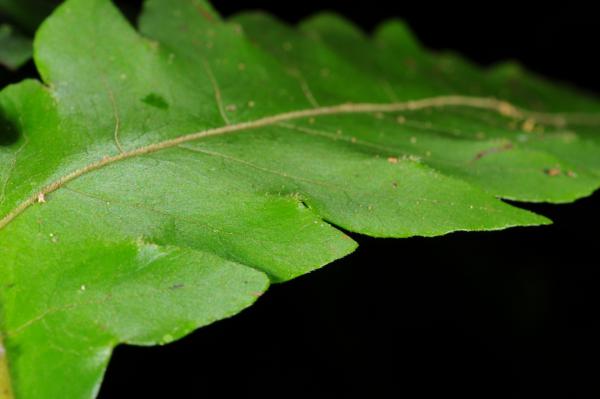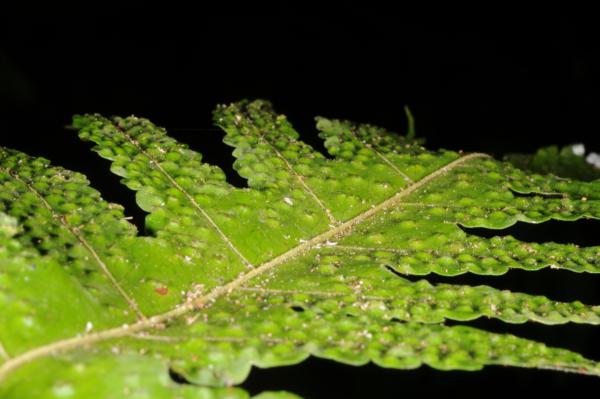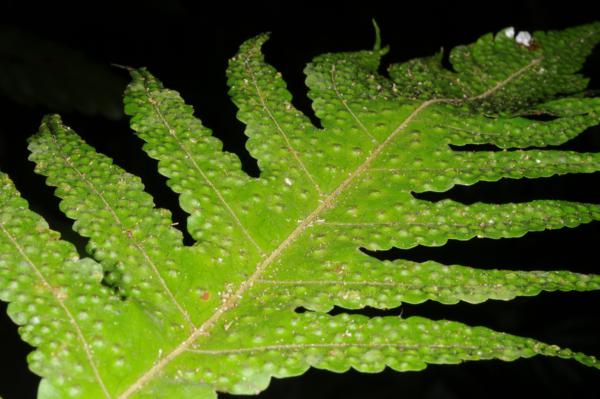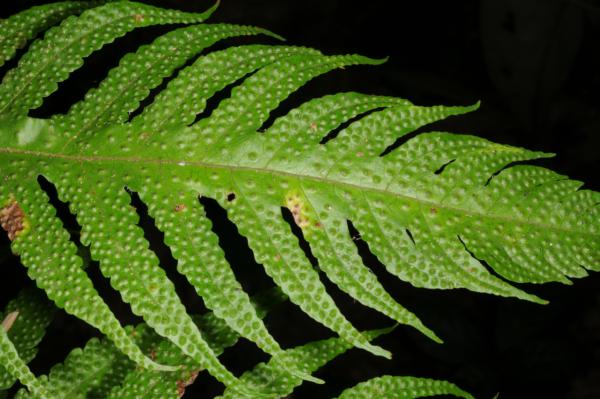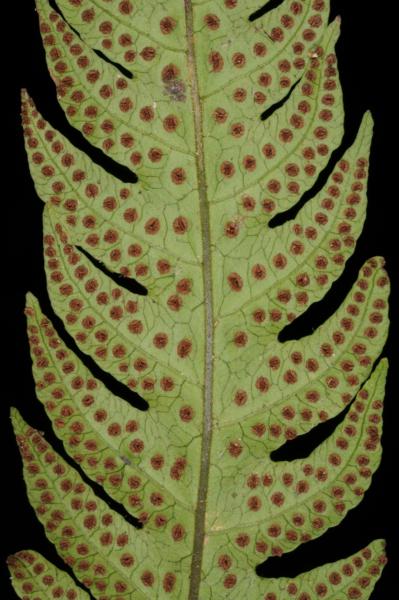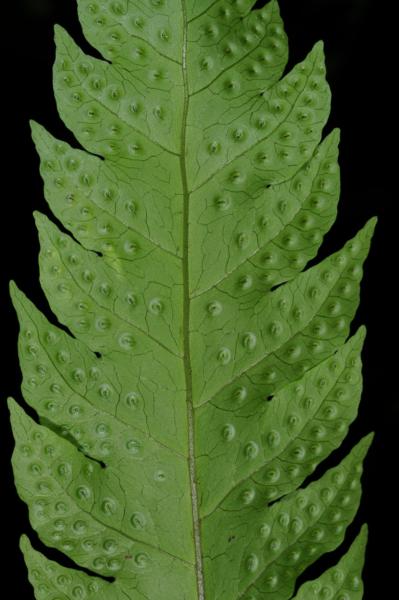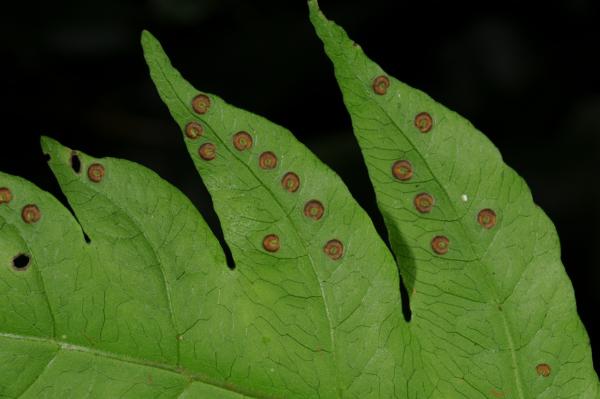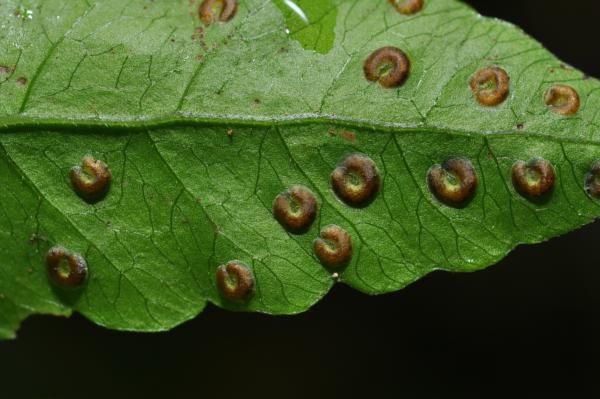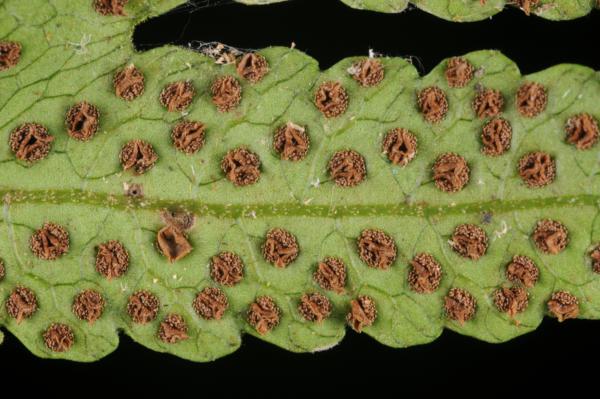
Tectaria griffithii (Baker) C.Chr.
Family
Tectariaceae
Nomenclature
Tectaria griffithii (Baker) C.Chr., Index Filic. Suppl. 3: 180. 1934; Tardieu & C.Chr., Fl. Indo-Chine 7(2): 411. 1941; Holttum, Dansk Bot. Ark. 23: 240. 1965; Holttum, Rev. Fl. Malaya, ed. 2, 2: 636. 1968; Tagawa & K.Iwats., SouthE. Asian Stud. 5: 97. 1967; Tagawa & K.Iwats., Acta Phytotax. Geobot. 23: 55. 1968; Tagawa & K.Iwats., Fl. Thailand 3: 370. 1988; Holttum, Fl. Males., Ser. II, Pterid. 2: 54. 1991; Boonkerd & Pollawatn, Pterid. Thailand: 213. 2000. – Nephrodium griffithii Baker in Hook. & Baker, Syn. Fil.: 300. 1867. – Type: Griffith s.n., Burma (K).
Nephrodium multicaudatum C.B.Clarke, Trans. Linn. Soc. II. 1: 540, t. 77. 1880. – Tectaria multicaudata (C.B.Clarke) Ching, Sinensia 2: 20. 1931; Holttum, Rev. Fl. Malaya ed. 1, 2: 507, f. 299. 1955 [‘1954’]. – Aspidium multicaudatum (C.B.Clarke) Bedd., Handb. Ferns Brit. India: 222. 1883.
Description
Rhizome short, erect, scaly; scales linear-subtriangular, up to 20 by 3 mm, entire, dark brown. Stipes dark brown to castaneous, up to 70 cm long, scaly throughout but scales gradually sparse upwards, hairy at least on adaxial surface. Laminae oblong-subdeltoid or pentagonal, up to 70 by 40 cm; lateral pinnae 1–4 free pairs, basal pinna the largest, with long stalk, asymmetrically subdeltoid, acute at apex, up to 30 by 25 cm, 1 or 2 basal basiscopic pinnules much larger, free with short stalks or sessile, oblong-lanceolate, caudate-acuminate, deeply lobed, up to 20 by 6 cm, 1 or 2 basal acroscopic pinnules free; middle pinnae smaller, with 0–2 free pinnules; apical pinna oblong-subdeltoid, acute at apex, broadly cuneate and a little decurrent at base, deeply lobed to pinnatifid; herbaceous, dark green, glabrous on both surfaces; rachis, costae and costules coarsely hairy above, sparsely scaly beneath; veins anastomosing to form copious areoles. Sori round, terminal on short free included veinlets, indusiate, in a single row at each side of midrib, medial or a little costular, more or less immersed and raised on upper surface; indusia large, up to 2 mm diam., glabrous, persistent .
Distribution in Thailand
NORTHERN: Lampang; NORTH-EASTERN: Loei; SOUTH-WESTERN: Kanchanaburi, Phetchaburi; SOUTH-EASTERN: Chanthaburi, Trat; PENINSULAR: Ranong, Surat Thani, Phangnga, Krabi, Nakhon Si Thammarat, Yala.
Distribution in Laos
[Peunongs]
Wider Distribution
N India, Burma, SW China, Indochina, W Malesia to the Philippines.
Ecology
On rocky mountain slopes in dense evergreen forests at low altitudes below 600 m alt.
Proposed IUCN Conservation Assessment
Least Concern (LC). This species is common and widespread and not under any known threat.
Voucher specimens - Thailand
Middleton et al. 4759, Kanchanaburi, Khao Laem National Park (E); Middleton et al. 4642, Trat, Khlong Kaew National Park (E); Middleton et al. 4349 & 5548, Surat Thani, Khlong Phanom National Park (E).
Habit
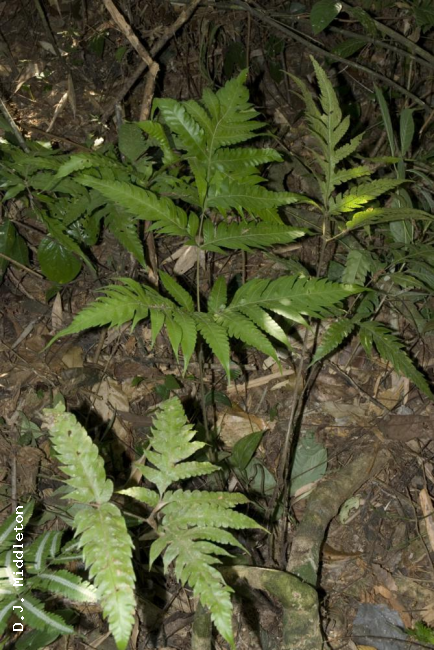
Habit
Rhizome
Transverse section through stipe
Scales on stipe
Fertile and sterile fronds
Sterile frond
Fertile frond
Basal basiscopic pinnules
Venation
Venation
Hairs at sinus on sterile frond
Upper surface of fertile frond
Upper surface of fertile frond
Upper surface of fertile frond
Lower surface of lamina with sori
Very young sori
Young sori
Young sori
Older sori
Site hosted by the Royal Botanic Garden Edinburgh. Content managed by Stuart Lindsay, Gardens by the Bay, Singapore and David Middleton, Singapore Botanic Gardens. Last updated 24 January 2012
